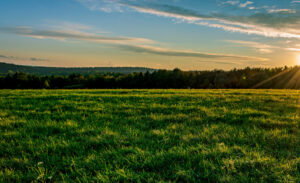
Monitoring BNG: Ensuring Biodiversity Gains Are Delivered and Maintained
Biodiversity net gain is judged on delivery, not intention. Since mandatory biodiversity net gain became a legal requirement under the Environment Act 2021, developers must show that biodiversity value will increase by at least 10%, measured in biodiversity units using the statutory biodiversity metric. What often receives less attention is the other half of the system. Monitoring BNG is how local planning authorities, land managers and responsible bodies make sure those biodiversity gains are actually delivered on the ground and maintained for the full term. For clients working with Civity, monitoring is not a bolt-on after planning permission. It is embedded in the biodiversity gain plan, tied to legal agreement structures, and essential to proving that post-development biodiversity value matches what the biodiversity metric calculations predicted. Government guidance is explicit that gains must be secured and managed for a minimum of thirty years and that monitoring plans should show how this will happen in practice. Why monitoring sits at the core of biodiversity net gain BNG is built around a before-and-after comparison. The statutory metric uses baseline biodiversity within the red line boundary to calculate pre-development biodiversity value, then forecasts post-development values based on habitats created, habitats enhanced, and any habitat loss that cannot be avoided. Those forecast figures are meaningful only if the habitats that underpin them are delivered and sustained long-term. Monitoring BNG therefore protects the integrity of the gain hierarchy. It ensures that significant on-site gains and on-site habitat creation are not overstated, that off-site biodiversity units are genuinely implemented, and that statutory biodiversity credits remain a last resort rather than a default option. The Habitat Management and Monitoring Plan (HMMP) and what the Government expects The government sets out clear expectations in its guidance on a Habitat Management and Monitoring Plan (HMMP) for BNG. This plan is often the most operational part of a biodiversity gain plan. It explains how habitats created or improved will reach their target condition, how habitat changes will be tracked, and how progress will be assessed over the thirty-year requirement. A well-prepared HMMP should link directly to statutory biodiversity metric outputs. If a site is relying on highly distinct habitats, linear habitats such as hedgerows, or more complex habitat enhancement, the monitoring plan should reflect the longer time to target condition and higher delivery risk that the statutory biodiversity metric tool factors into biodiversity units. Government and Natural England have also produced templates to standardise management and monitoring submissions, helping local planning authorities review plans consistently. Establishing the baseline and setting realistic targets Effective monitoring starts with a reliable baseline. The baseline biodiversity value must be based on robust survey data for existing habitat within the development site, recorded correctly in the statutory biodiversity metric or small sites metric. If the baseline is inaccurate, the question of how many units are required becomes unclear, and monitoring later cannot prove that net gain has been achieved. Targets should then mirror what the biodiversity metric predicts. This means setting habitat condition goals that are realistic for the habitat type, the land management context, and the expected time needed for habitats created to mature. It also means describing what success looks like for strategic significance, particularly where local nature recovery strategies influence habitat priorities. Monitoring on-site gains through the development process On-site gains remain the first preference in mandatory BNG. Monitoring for on-site habitat creation/enhancement, therefore, needs to start early, tracking the implementation of habitat creation and habitat enhancement alongside construction. Local planning authorities will expect clear evidence that on-site habitats are delivered as planned and on schedule, that habitat lost during construction is not replaced by lower-value habitat categories, and that any invasive species risks are controlled so that biodiversity outcomes are not undermined. Where a scheme promises significant on-site gains, monitoring is crucial to ensuring those significant on-site gains are delivered; it also allows for adaptive management to respond to changing conditions throughout the thirty-year period. Government guidance makes it clear that significant on-site gains require the same thirty-year security and monitoring standards as off-site gains. Monitoring off-site biodiversity units and gain sites Many projects cannot achieve net gain entirely on-site. In these cases, monitoring extends to off-site solutions, whether delivered by a habitat bank, a landowner managing their own land, or another land manager providing off-site biodiversity gains. Any off-site biodiversity units relied on by a development must be recorded on the national Biodiversity Gain Site Register, and monitoring schedules should align with what is registered there. Local planning authorities need confidence that off-site gains will be enforceable for thirty years. Guidance stresses the importance of confirming sufficient control over off-site land, especially where the gain sites fall outside the planning authority’s boundary. This is where the responsible body role becomes critical, since they may be the only party able to verify and enforce long-term delivery in certain circumstances. The legal mechanisms that make monitoring enforceable Monitoring is only as strong as the legal agreement behind it. Biodiversity net gain guidance requires that significant on-site gains and all off-site gain sites are legally secured, typically through planning obligations or through a conservation covenant where off-site delivery is involved. The two main types of legal agreements used to secure biodiversity gains are Section 106 agreements & conservation covenants. The legal agreement should reference the management and monitoring plan directly. It should confirm responsibilities for monitoring, reporting frequency, funding for habitat management, and actions required if habitats fail to meet the target condition. Without clear planning obligations or covenant terms, inspectable monitoring becomes difficult, and the statutory biodiversity metric outputs risk becoming theoretical. When statutory biodiversity credits are used, and how they are monitored Statutory biodiversity credits, sometimes referred to as biodiversity credits, are reserved for cases where on-site and off-site gains cannot deliver the required net gain. Government policy is clear that the purchase of statutory biodiversity credits should be a last resort, and monitoring needs to evidence why that route was unavoidable. Where a developer proposes to buy statutory biodiversity credits, local planning authorities should require documentation showing that the gain hierarchy has been followed, that off-site units were not feasible, and that credits will be bought from Natural England. Monitoring then focuses on ensuring the credits are genuinely purchased and reflected in the final biodiversity gain plan approval. Special considerations for irreplaceable habitats and complex sites Irreplaceable habitats cannot be treated like standard habitat change in the biodiversity metric. Monitoring plans should explain how impacts on irreplaceable habitats are avoided or managed. and how any compensatory measures will be verified over time. The same applies to sites with existing protections or with highly distinct habitats that carry a greater risk if condition targets are not met. Linear habitats, such as hedgerows and watercourses, also need careful monitoring because their ecological function depends on continuity and long-term management, not just area-based gains. Resourcing, ecological expertise, and the widening BNG landscape Monitoring BNG requires ecological expertise. Government updates to the small sites metric confirm that an LPA reviewer does not always need to be a qualified ecologist, but authorities still need access to specialist input for complex habitats and high-risk gain plans. Developers and land managers should plan for this by commissioning competent ecologists who understand the statutory biodiversity metric tool and the practicalities of long-term habitat management. Monitoring expectations are also broadening. The Government has proposed extending mandatory BNG to nationally significant infrastructure projects from May 2026. While NSIPs are not yet within the statutory regime, many are already preparing BNG approaches, and monitoring frameworks developed now will underpin delivery in that future landscape. Conclusion Monitoring BNG is the safeguard that turns biodiversity net gain from a calculation into a lasting outcome. It links baseline biodiversity to post-development biodiversity value through measurable habitat creation and habitat enhancement, enforced by clear legal agreement structures and guided by the statutory biodiversity metric. It verifies on-site gains, holds off-site biodiversity units to account through the national register, keeps statutory biodiversity credits as a true last resort, and ensures that biodiversity value is maintained for at least thirty years. Civity supports developers, local planning authorities and land managers in producing monitoring plans that are practical, compliant and evidence-led. Whether your project relies on on-site habitat, off-site gains, or a combination of both, the right habitat management and monitoring approach is what ensures net gain is not just promised but delivered and maintained. DisclaimerThis blog provides a general overview of monitoring biodiversity net gain in England, based on current government and Natural England guidance. It does not constitute legal advice. Monitoring requirements may vary depending on exemptions, phased development, irreplaceable habitats, or the use of off-site units and statutory biodiversity credits. Always confirm project-specific obligations with the relevant planning authority and suitably qualified ecological or legal advisers before finalising a biodiversity gain plan or management and monitoring plan.






